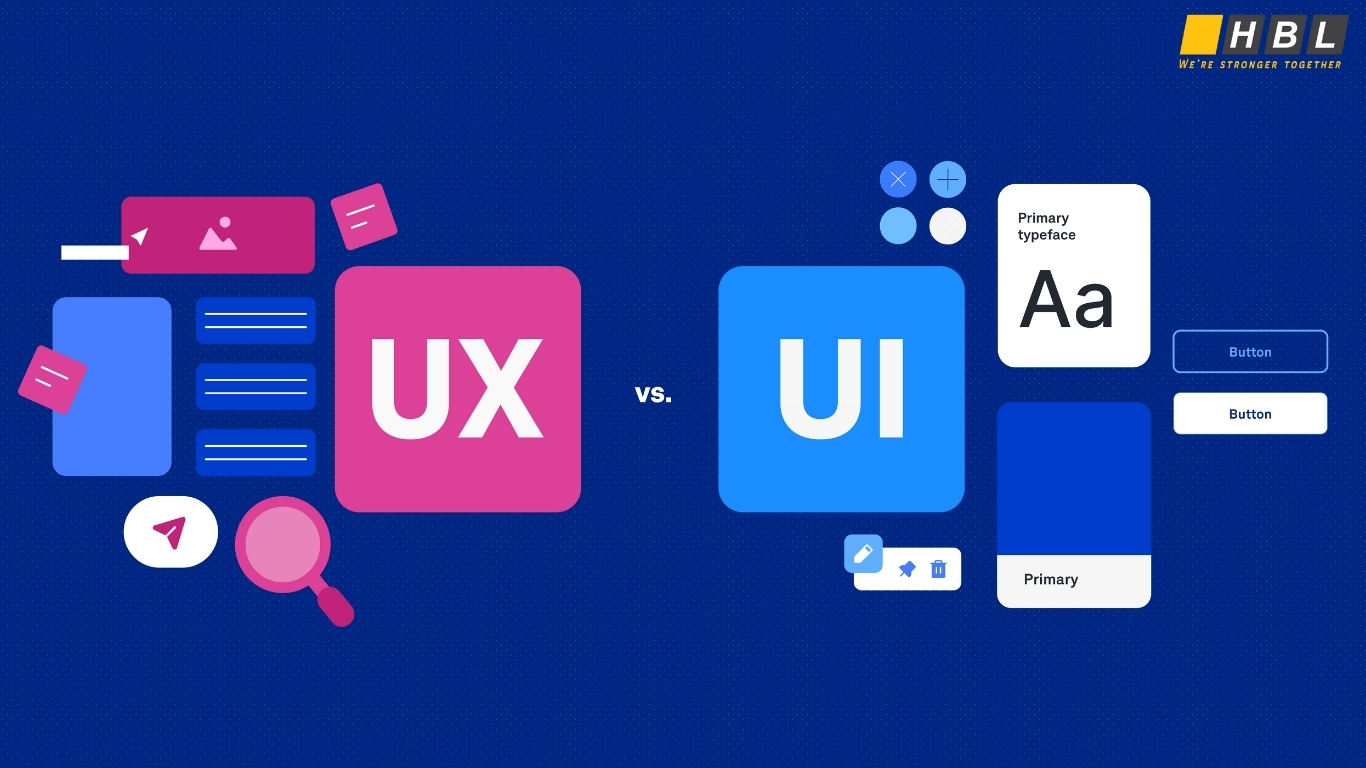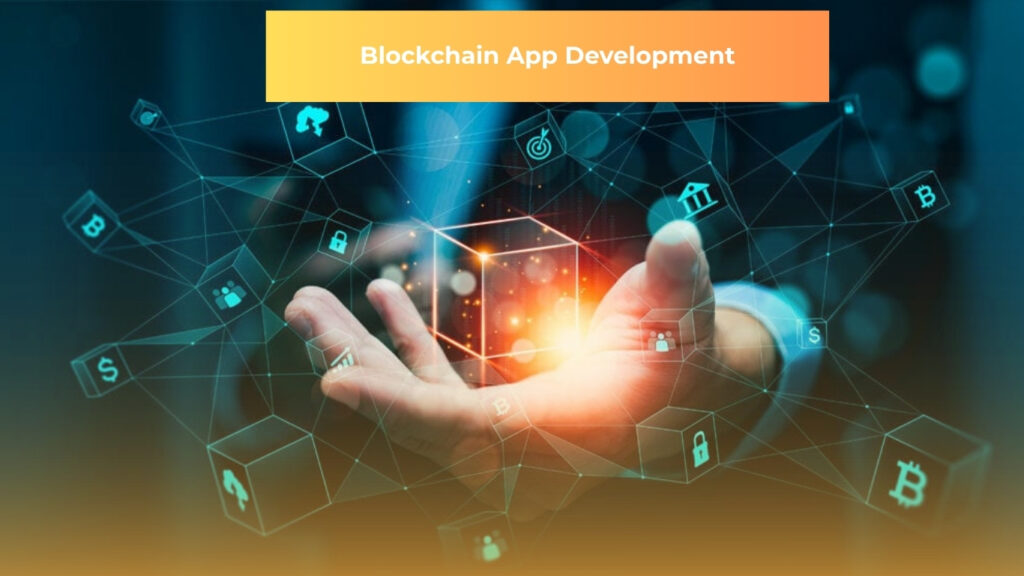Blockchain app development is transforming how businesses handle data, transactions, and trust in a digital world. As companies worldwide seek decentralized solutions to enhance security and efficiency, understanding this process is key for staying competitive. Whether you’re a startup exploring dApps or an enterprise integrating blockchain, this guide draws from industry insights and real experiences to help you navigate it all.
Quick Summary:
Blockchain app development creates decentralized apps (dApps) on networks like Ethereum for secure, transparent solutions. Start by defining goals and choosing a platform, then code smart contracts, test on testnets, and deploy—costs typically range from $45,000 to $350,000 based on complexity. Partnering with a blockchain app development company can streamline the process and ensure scalability.
What is Blockchain App Development?

Blockchain app development refers to creating applications that run on decentralized blockchain networks, rather than centralized servers. At its core, blockchain app development is the process of building dApps (decentralized applications) that leverage distributed ledgers for immutable data storage, peer-to-peer transactions, and automated smart contracts. This eliminates intermediaries, boosting transparency and security across industries like finance, healthcare, and supply chain.
Why does it matter? In a world where data breaches cost businesses an average of $4.45 million globally (per IBM), blockchain provides a tamper-proof alternative. For instance, from the provided research in “A Survey of Blockchain Applications,” blockchain integrates into domains like cryptocurrency and advertising to counter fraud and improve efficiency.
If you’re considering blockchain app development services, think of it as building a vending machine-like system: users input value, and the app automatically delivers outcomes without central control.
How Blockchain App Development Works
Understanding how blockchain app development works starts with its decentralized foundation. Unlike traditional apps, these rely on networks of nodes to validate and record data in blocks, chained together cryptographically.
Here’s a step-by-step breakdown:
- Define the Goal: Identify the problem—e.g., secure supply chain tracking—and select a blockchain type (public like Ethereum or private like Hyperledger).
- Choose a Platform: Pick based on needs; Ethereum for smart contracts, Solana for speed.
- Design the UI/UX: Create intuitive interfaces to mask blockchain complexity for users.

- Code Smart Contracts: Use languages like Solidity to automate rules, as seen in the Dapp University guide where contracts handle marketplace ownership transfers.
- Test on Testnets: Simulate real scenarios to catch bugs, using tools like Ganache for local blockchains.
- Deploy and Maintain: Launch on the mainnet and monitor for updates.
For comparison, here’s a quick table of platforms:
| Platform | Best For | Scalability | Cost Factor |
| Ethereum | Smart Contracts | Medium (Layer 2 solutions) | High gas fees |
| Hyperledger | Enterprise Privacy | High | Lower for private nets |
| Solana | High-Speed Apps | Very High | Affordable |
This process ensures robust apps, but integrating blockchain app development services from experts can accelerate it.
Free Documents on Blockchain App Development Basics!
Advantages of Blockchain App Development
Blockchain app development offers transformative benefits for businesses aiming to innovate.
- Enhanced Security: Cryptographic hashing makes data immutable, reducing fraud risks—e.g., MetaX uses blockchain to combat ad fraud, per the survey PDF.
- Transparency and Traceability: All transactions are auditable in real-time, ideal for supply chains where 75% of executives see blockchain as a competitive advantage (Deloitte).
- Cost Efficiency: Eliminates intermediaries, cutting operational costs by up to 30% in finance (Gartner).
- Decentralized Reliability: No single point of failure, ensuring uptime even if nodes fail.
- Automation via Smart Contracts: Self-executing code speeds processes, like instant payments in insurance via InsureX.
These advantages make blockchain app development a smart choice for global B2B operations.
Challenges and Solutions in Blockchain App Development
While powerful, blockchain app development comes with hurdles. From our experience at HBLAB, here’s how to tackle them:
- Scalability Issues: Networks like Ethereum can slow with high traffic. Solution: Use Layer 2 scaling (e.g., Optimism) or hybrid models—test early with tools like Ganache to optimize.
- High Development Costs: Initial setup can be pricey. Solution: Start with MVPs and leverage open-source frameworks; partner with a blockchain app development company to control expenses.
- Regulatory Uncertainty: Varying global laws complicate compliance. Solution: Consult legal experts and build flexible features like audit trails.
- Talent Shortages: Skilled developers are rare. Solution: Outsource to certified teams; HBLAB’s 630+ experts help bridge this gap.
- User Adoption Barriers: Complex UX deters users. Solution: Prioritize intuitive designs and education—add fiat gateways for ease.
Addressing these proactively ensures successful projects.
Explore our blockchain app development services
Emerging Trends in Blockchain App Development (2025)

Blockchain app development is undergoing a transformative evolution, driven by widespread global adoption and innovative technological synergies. With 95% of enterprises planning blockchain investments, the industry is poised for unprecedented growth, projected to reach $1.87 trillion by 2034 with a 52.9% CAGR. This section delves into the key trends shaping this landscape, offering actionable insights for businesses looking to stay ahead.
DeFi 2.0: Redefining Financial Ecosystems
The second wave of Decentralized Finance (DeFi) is redefining financial services by introducing advanced features beyond basic lending and borrowing. DeFi 2.0 platforms, built on scalable blockchains like Ethereum and Solana, now incorporate automated market makers (AMMs) with dynamic liquidity pools and yield optimization algorithms.
For instance, the Dapp University guide highlights how smart contracts can manage marketplace ownership transfers, a concept DeFi 2.0 extends to complex financial instruments. Businesses can leverage this trend to offer cross-border payment solutions or tokenized assets, reducing reliance on traditional banks by up to 30% in transaction costs (Gartner, 2025).
NFT Integrations Beyond Art
Non-Fungible Tokens (NFTs) are evolving from digital art collectibles to versatile tools across industries. In 2025, we see NFTs integrated into supply chain management for product authentication, real estate for fractional ownership, and gaming for in-game asset trading. The “A Survey of Blockchain Applications” mentions copyright protection as a use case, which NFTs enhance by providing immutable proof of ownership. Companies adopting this trend report a 40% increase in customer trust (Deloitte, 2025), making it a powerful tool for brand differentiation and revenue generation.
Zero-Knowledge Proofs for Enhanced Privacy
Zero-knowledge proofs (ZKPs) are gaining traction as a privacy-preserving technology, allowing data verification without revealing underlying details. This trend, detailed in the “Blockchain Application Development” guide, supports compliance with global data protection regulations like GDPR. ZKPs enable secure identity management and confidential transactions, critical for healthcare and finance applications.
For example, a blockchain app using ZKPs can verify a patient’s eligibility without exposing medical records, reducing data breach risks by 50% (IBM, 2025). This makes it a must-consider for privacy-conscious enterprises.
Cross-Chain Interoperability: Bridging Blockchain Ecosystems
Cross-chain interoperability is breaking down silos between blockchain networks, enabling seamless data and asset transfers. Protocols like Polkadot and Cosmos facilitate this by allowing Ethereum smart contracts to interact with Hyperledger-based enterprise solutions. This trend is vital for businesses operating multiple blockchain systems, with 60% of large firms planning interoperability projects by year-end 2025 (Forbes). The result? Enhanced efficiency and reduced redundancy, offering a competitive edge in global markets.
Green Blockchains: Sustainable Innovation
Sustainability is a major focus, with green blockchains reducing energy consumption through proof-of-stake (PoS) and other eco-friendly consensus mechanisms. Energy applications aligns with this shift, where PoS cuts energy use by 50% compared to proof-of-work systems like Bitcoin’s. Ethereum’s transition to PoS in 2022 set the stage, and by 2025, 70% of new blockchain projects adopt green technologies. This trend appeals to environmentally conscious businesses, aligning with corporate social responsibility goals.
AI and Blockchain Synergy
The integration of Artificial Intelligence (AI) with blockchain is a game-changer, enhancing decision-making and automation. AI can analyze immutable blockchain data for predictive analytics, such as fraud detection, while blockchain ensures data integrity. The Dapp University guide’s marketplace app could evolve with AI to recommend purchases, boosting user engagement by 25%. This synergy requires robust smart contract development—using Solidity as per the guide— and scalable architectures, positioning businesses to lead in innovation.
Scalability Solutions and Layer 2 Adoption
Scalability remains a challenge, but 2025 brings advanced solutions like Layer 2 scaling and sharding. These technologies increase transaction throughput by 10x, addressing Ethereum’s congestion issues highlighted in the survey. Businesses deploying Layer 2 solutions report cost reductions of 35% on gas fees, making dApps more viable for high-volume use cases like e-commerce or gaming. This trend underscores the need for strategic platform selection during development.
Regulatory Evolution and Compliance Tools
With blockchain’s global expansion, regulatory frameworks are evolving. By 2025, 80% of countries have clarified digital asset laws (World Economic Forum, 2025), prompting the development of compliance tools like automated audit trails and KYC (Know Your Customer) integrations. The “Blockchain Application Development” guide emphasizes legal alignment, and tools like these ensure businesses meet standards like MiCA in the EU, reducing compliance costs by 20%.
When to Use Blockchain App Development
Use blockchain app development if you need immutable records, like in finance for fraud-proof transactions, or supply chains for traceability. It’s ideal when decentralization adds value—e.g., if intermediaries cost you time/money. Consider alternatives like traditional databases if your app doesn’t require transparency or if scalability isn’t an issue. Ask: Does my project involve trust among multiple parties? If yes, blockchain fits.
Detailed Cost Breakdown for Blockchain App Development
Blockchain app development cost varies widely—$45,000 for basic apps to $350,000+ for enterprise. Factors include:
- Complexity: Simple dApps (e.g., wallets) cost $45K-$80K; complex with AI/scalability hit $150K+.
- Platform: Ethereum adds gas fees; private chains lower costs.
- Team: In-house vs. outsourced—offshore saves 30-50%.
- Testing/Deployment: 20% of budget for security audits.
Table of Estimates:
| App Type | Cost Range | Timeframe |
| Basic (Wallet)Enterprise (Supply Chain) | $45K-$100K | 2-4 months |
| Mid-Level (Marketplace) | $100K-$200K | 4-8 months |
| Enterprise (Supply Chain) | $200K-$350K+ | 8-12+ months |
To optimize: Use pre-built tools and MVPs. How much does it cost to develop a blockchain app? Factor in ongoing maintenance at 10-15% annually.
HBLAB – Your Trusted Software Development Partner:
With 10+ years of experience and a team of 630+ professionals, HBLAB provides expert blockchain app development services. We hold CMMI Level 3 certification, ensuring high-quality processes, and have been at the forefront of AI-powered solutions since 2017.

Our flexible engagement models (offshore, onsite, dedicated teams) and cost-efficient services (often 30% lower cost) help businesses worldwide accelerate projects without compromising quality.
Reach out to HBLAB experts for tailored advice
FAQ
1. How to develop a blockchain app?
Start by defining your app’s purpose, select a platform like Ethereum, design the UI, code smart contracts in Solidity, test thoroughly, and deploy. Use tools like Ganache for local testing to ensure security.
2. How much does it cost to develop a blockchain app?
Costs range from $45,000 for simple apps to $350,000+ for complex ones, influenced by features, platform, and team expertise. Factor in 10-15% for ongoing maintenance.
3. What programming language is used for blockchain?
Solidity is primary for Ethereum smart contracts, while Go is used for Hyperledger. JavaScript often handles front-end dApp interactions.
4. What is a blockchain app?
A blockchain app, or dApp, runs on decentralized networks for secure, transparent operations like transactions or data sharing, without central control.
5. Can we build a blockchain app without cryptocurrency?
Yes, focus on permissioned blockchains for enterprise uses like supply chains or records, where no public crypto is needed—smart contracts handle logic instead.
6. What is the minimum cost to build an app?
For a basic blockchain app, minimum costs start at around $45,000, covering essentials like smart contracts and testing.
7. What is the cheapest way to develop an app?
Use open-source tools, offshore developers, and MVPs to minimize costs—partnering with a cost-effective blockchain app development company can save 30-50%.
8. How much will it cost to develop an app in 2025?
In 2025, expect $50,000-$400,000+ for blockchain apps, with rising trends like AI integration adding 10-20% to budgets.
9. Can I create my own app for free?
Basic prototypes can use free tools like Remix IDE, but full development requires paid resources for testing and deployment—free options limit scalability.
10. What are blockchain app development services?
These include end-to-end solutions from design to deployment, offered by companies specializing in dApps, smart contracts, and integration.
CONTACT US FOR A FREE CONSULTATION
Read More:
– Manufacturing Supply Chain Management: Optimizing Efficiency for Global Success (6 Case Studies)
– Supply Chain Risk Management Software: A Complete Guide for 2025
– AI in Ecommerce (2025): Extraordinary Trends Redefining Online Shopping Worldwide

